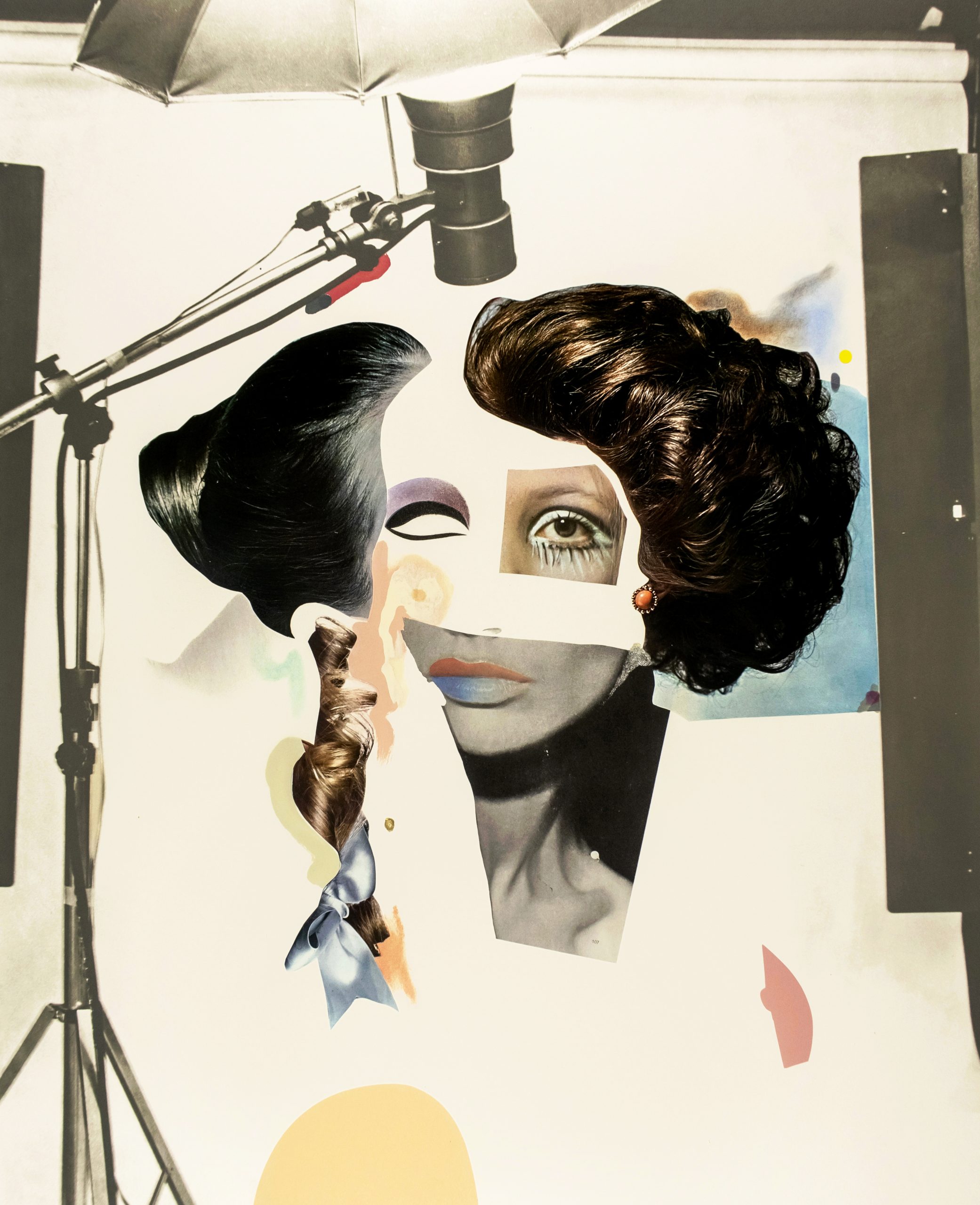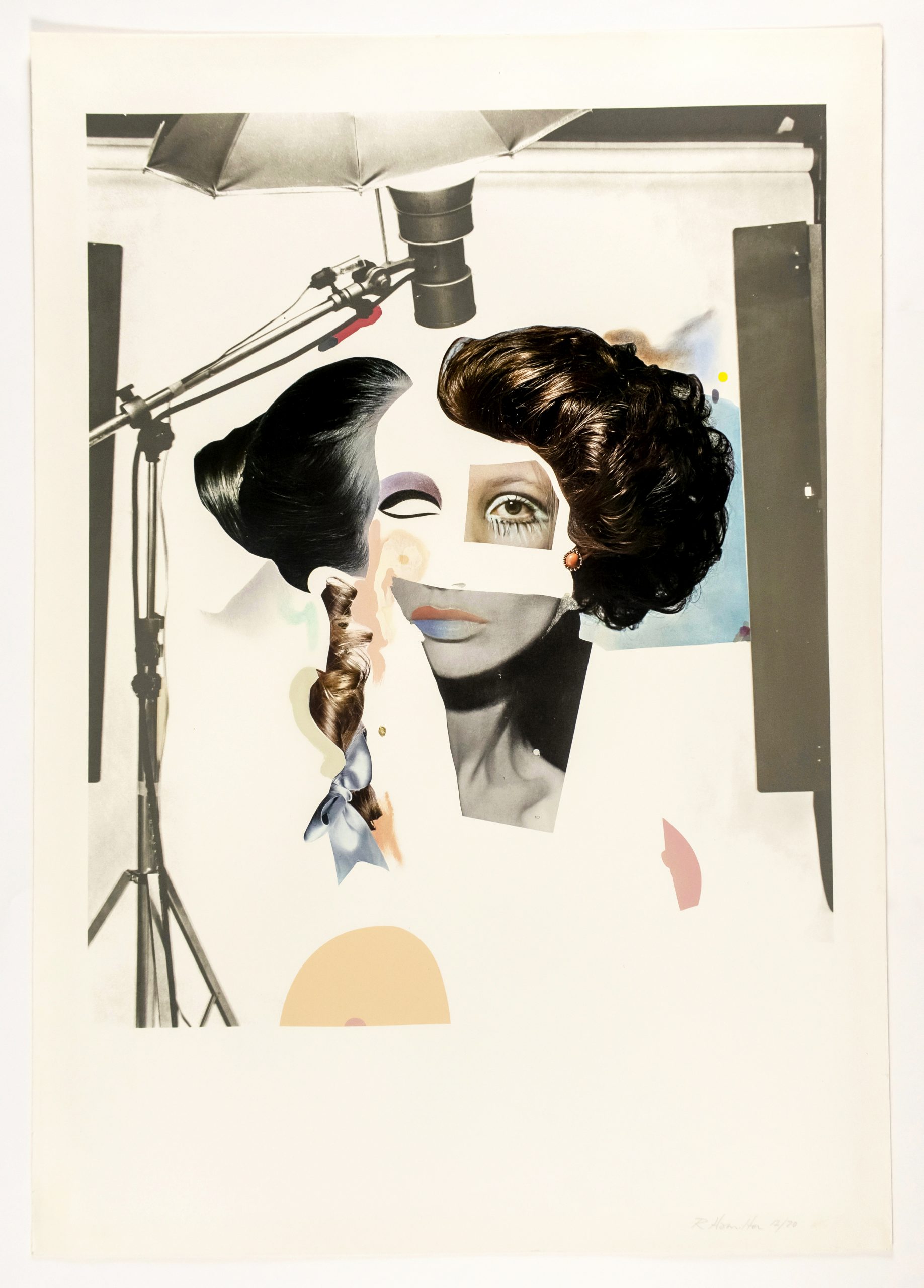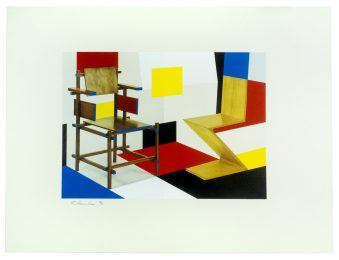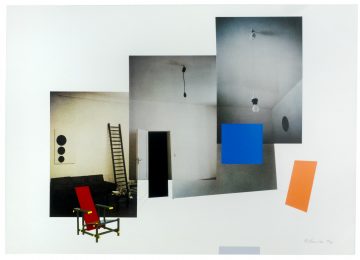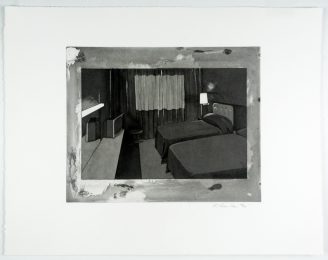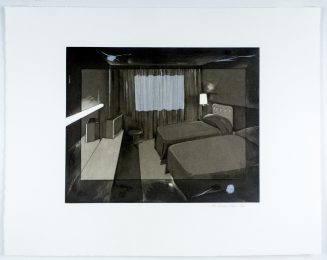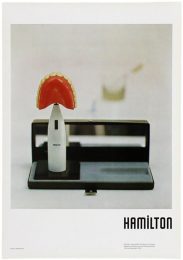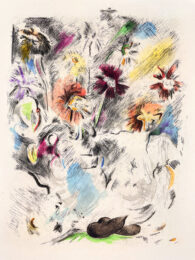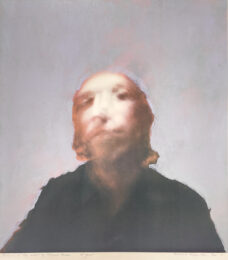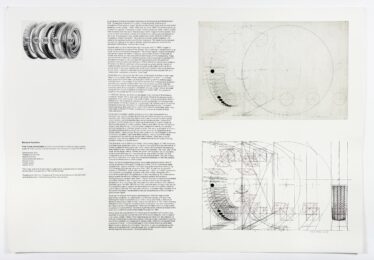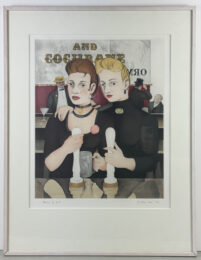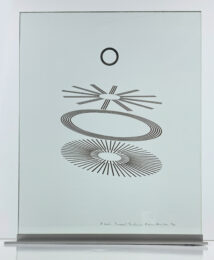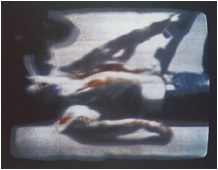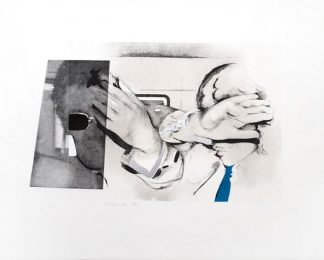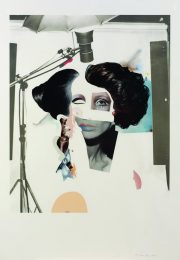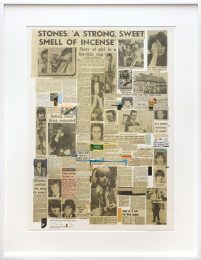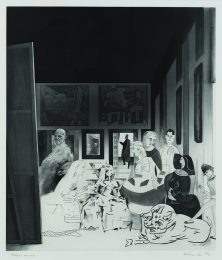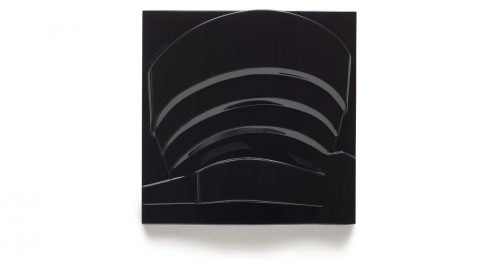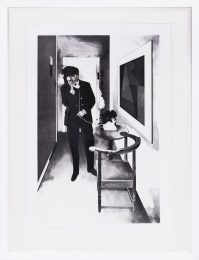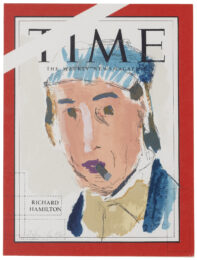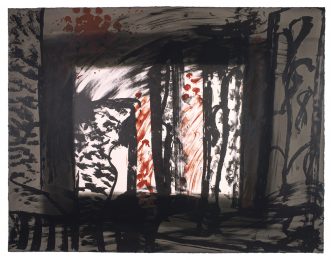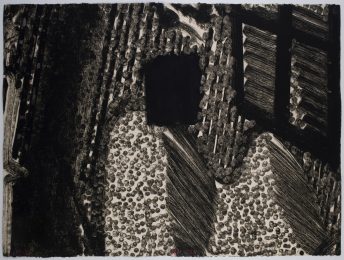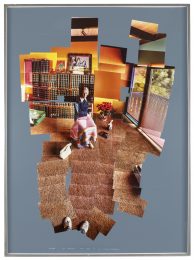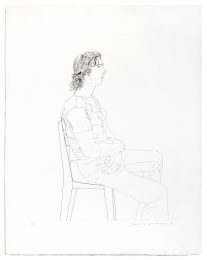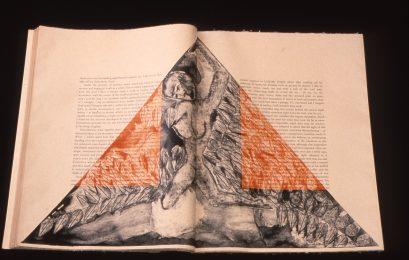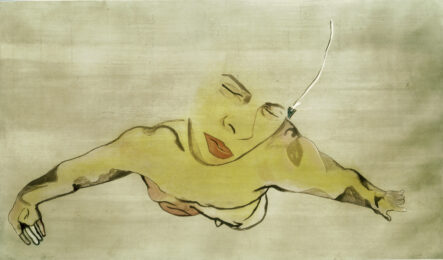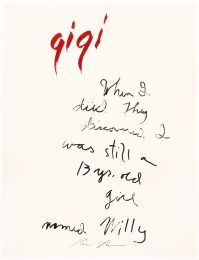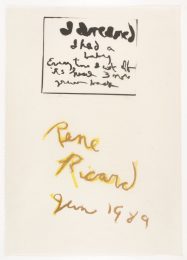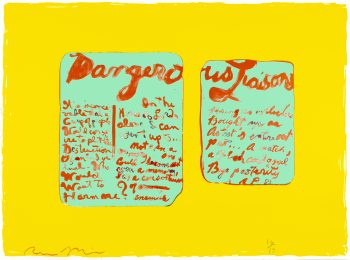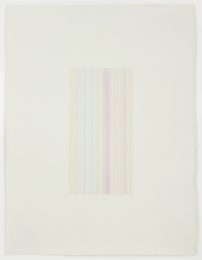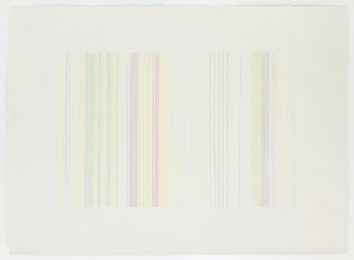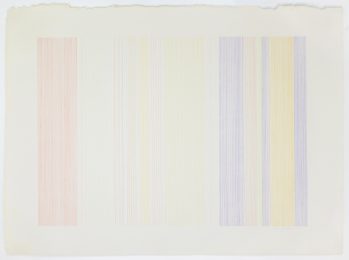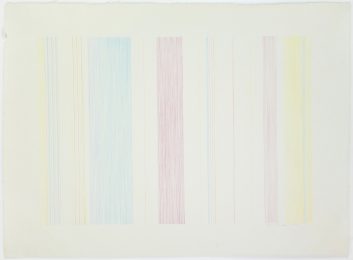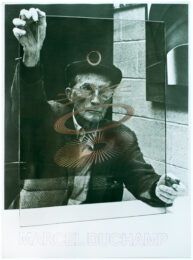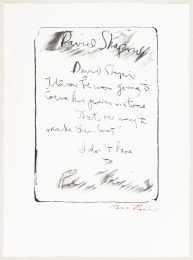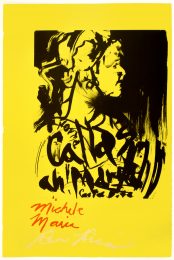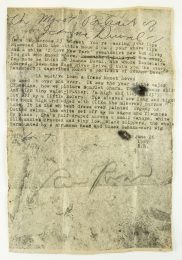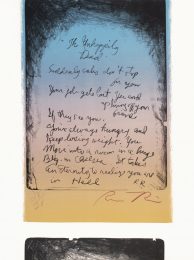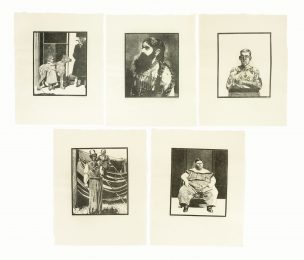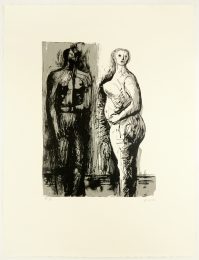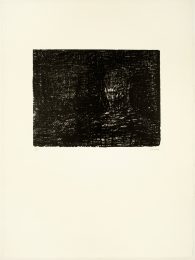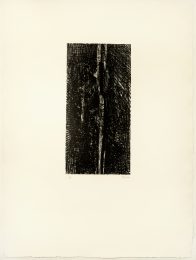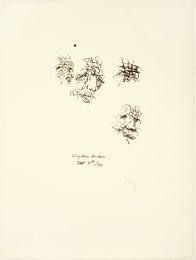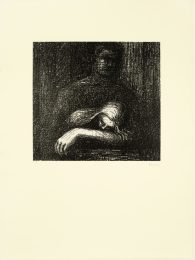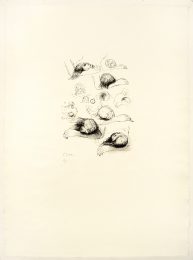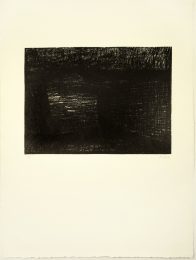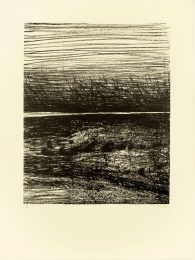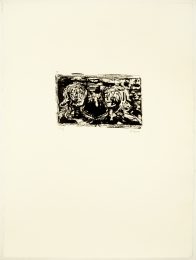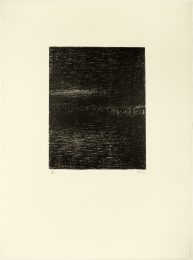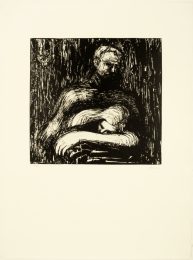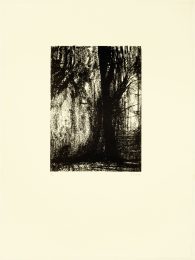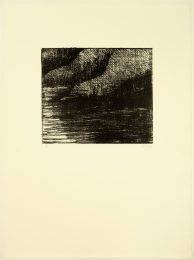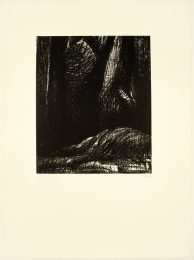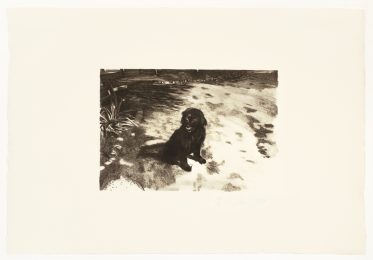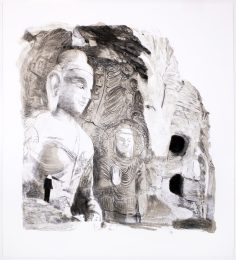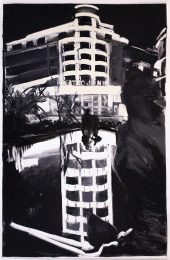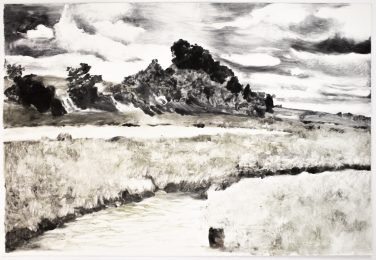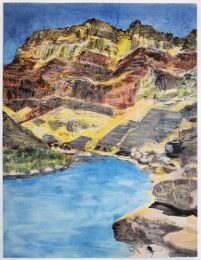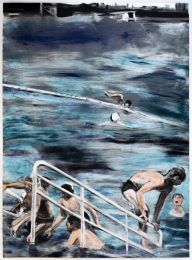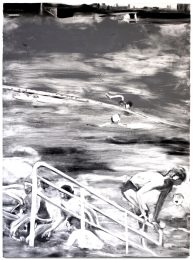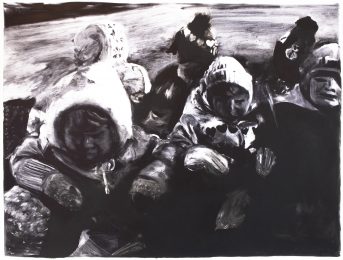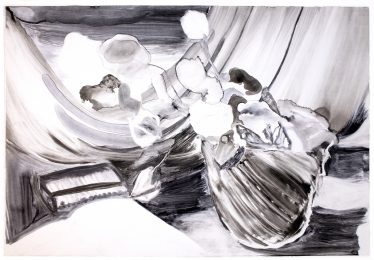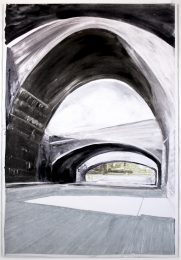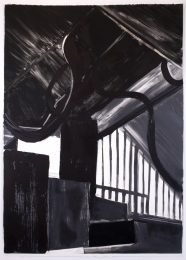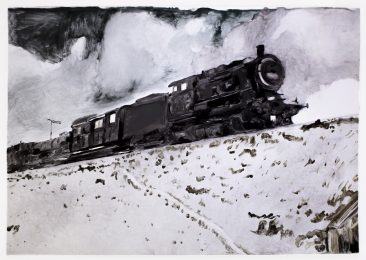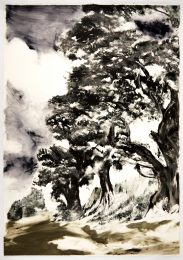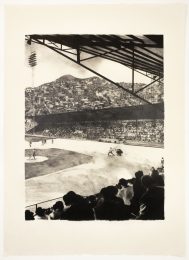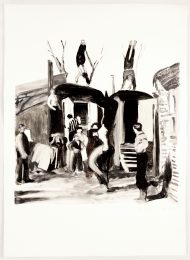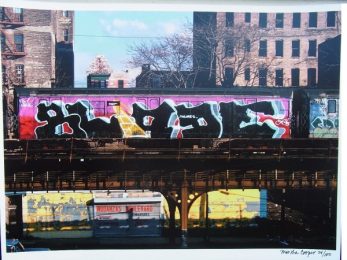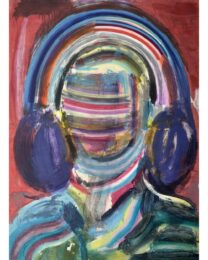Details — Click to read
Photo-offset lithography, collage, screen print in two colors, pochoir, retouched with cosmetics by the artist on Fabriano paper
Paper 39.1 x 27.1 in. / 99.2 x 68.8
Image 29.5 x 23.5 in. / 75 x 61 cm
Signed by the artist and numbered 12/70 lower right in pencil
Like a mad scientist, Richard Hamilton assembles the perfect model: Veruschka’s left eye and Sophia Loren’s lips, complemented by three cutouts of glossy brown hair. Framed by black and white photographic equipment, the fragmented face is accented by areas of flat color and airbrush-style shading in washed-out peach, blue, grey, pink, yellow, and brown. To the left, where an eye should be, sleek eyeliner and purple shadow is painted over blank space. Subtle details abound: dabs of glitter, hand-applied cosmetics, and a tiny page number beneath Loren’s collarbone.
This glamorous scene was printed from Hamilton’s favorite of
thirteen 1969 collages that he named Cosmetic Studies, or Fashion Plates. He assembled photographs of models such as Jean Shrimpton from magazines, and layered them with paint, cosmetics, and pastel. Each study employed as a backdrop a careful arrangement of photo equipment belonging to Hamilton’s friend Tony Evans. The 1960s brought an explosion of fashion and cosmetic magazines, and Hamilton saw an opportunity to explore the profusion of imagery by combining his artist’s sensibility with the visual language of the industry.
These works were exhibited as the centerpieces of Hamilton’s first Tate Gallery retrospective in 1970. From these collages, he selected the one he viewed as superlative, to print as an edition. The offset background was printed at the studio of Sergio and Fausta Tosi, Milan, then screen printed at Kelpra studio in London. Finally the prints were hand-colored with pochoir and retouched by the artist with cosmetics. Petersburg Press published the edition.
The fashion photography equipment served as a frame for each composition, emphasizing the iterative nature of a fashion shoot, or the pages of a magazine. This repeating imagery also provided a theatrical backdrop for the model’s fragmented faces, relating to the “churn” of the fashion industry where a series of models marched in and out of prominence year after year and the industry eagerly devoured new talent, new imagery, and new technology. Hamilton’s process, too, has always relied on iteration: the artist returns to the same images and concepts, refashioning them in reference to pop culture, art history, and his own oeuvre. Hamilton referred to pop culture as inducing a “peculiar mixture of reverence and cynicism in me.”

